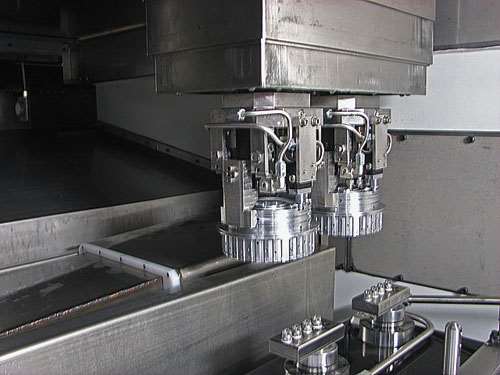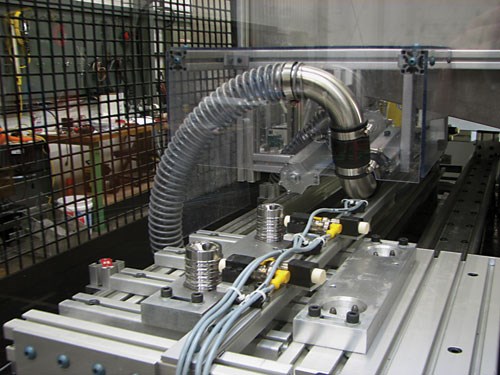Deburring, Cleaning, Rust Inhibiting Done on One Machine
Multitasking extends to post processing.
As is often the case with machine builders, creating a custom machine for one customer often provides an opportunity to solve similar production problems for other potential customers. It is one of the ways progress is made. Increasingly, that progress, represented by multitasking machines, combines operations into a single platform.
In this case, the multitasking solution was in the form of combining post-process operations—deburring, cleaning and rust inhibiting—into a single machine. With factory floor space at a premium and capital equipment funds scarce, Linamar, a Tier One Canadian automotive part supplier, turned to Bertsche Engineering recently for an all-in-one part deburring, final rinse and drying solution.
Featured Content
Typically, complex machined automotive parts with multiple intersecting holes require feature-specific part deburring to ensure that parts are burr-free. After deburring, parts also need a final cleaning/washing to ensure removal of microscopic particles that might adversely affect performance. They are then preserved with a rust or oxidation inhibitor and dried for shipment (transport) to be assembled. Usually, this involves separate pieces of equipment, linked by conveyors or robots, to transport parts to each machine.
To solve the problem of densely filled factory floor space, Bertsche Engineering developed a machine that handles all these processes in one machine, in one deburring cycle. The machine takes oil and chip contaminated parts, previously machined on CNC milling centers and mill-turn machines, then selectively deburrs critical features using high pressure water, blasting chips out of internal cavities, knocking off all feather-edge burrs and fan washing the outside of the part, using a CNC for full cycle control.
This process is accomplished by a series of rotating lance nozzles that probe small diameter internal holes in order to blast feather edge burrs clean at intersection points and wash chips out of dead-end passages. External features are then blasted with a series of direct nozzles that release as many as 10,000 psi of water at the burr while tracing the part edges. The part is then washed with high pressure rotating fan nozzles. Moreover, additional mechanical wire and filament brush tooled deburring stations can be incorporated into the Bertsche system to mechanically remove burrs.
The same machine moves the deburred part to an agitated wash and rinse station, where the part is rinsed, cleaned and preserved with an aqueous rust inhibitor (providing protection for as many as 24 days) and is finally dried. The part is then ready for final assembly.
RELATED CONTENT
-
Get to Know Cleanliness Standards
With a small amount of practice, it is possible to understand the underlying motivation of a cleaning standard and to figure out the specific aspects of the specification that are applicable to the customer.
-
Cleaning Parts Cost Effectively
A shop should look at all aspects of the production process to maximize productivity. This includes selecting an efficient cleaning system.
-
Heat’s Impact on Parts Cleaning
Thermal dynamics is important for assisting in the cleaning of a part. Adding heat or energy influences the cleaning process through its impact on chemistry, the water within the washer and its effect on drying.








